The Messel pit is one of the most spectacular fossil sites of the world. It gives us an incredible insight into a subtropical ecosystem from the Eocene, about 47 million years ago. The special conditions of this Lagerstätte did not only preserve the bones of the animals which lived in and around a deep crater lake, but also in some cases hair, feathers and body silhouettes, even insects with their colors still preserved. It enables us to get a vivid view of a bygone world, from its plants to insects, fish, amphibians, reptiles, birds and mammals.
It was a weird world which consisted of the survivors of the mass extinction at the end of the Cretaceous 66 million years ago and lineages which had just started to evolve into many animals which we know today. We find a lot of animals which appear surprisingly familiar and modern to us, yet considerably out-of-place in many cases, but also weird archaic lineages and overturned experiments of evolution. In this series I want to feature some of the fossils at the Messel pit exhibition of the Senckenberg Museum at Frankfurt, which I visited in early spring, just before the country was hit by the pandemic. I don´t want to go too much into the details of the species, as this would easily go beyond the scope of this blog article.
I will start the series with the fishes from the exhibition. The most famous fish from Messel pit are quite likely the gars, which I featured already in an earlier blog article several years ago. Today we find gars only in the New World, mainly in the east of the United states, at Cuba and parts of Mesoamerica. But 47 millions years ago gars did swim also in the area which would later become Germany. Gars have interlocking ganoid scales with a very hard layer of enamal on the surface and often fossilize particularly well. The most common species of gar from Messel was Atractosteus strausi (Syn.: A straussi, A. straußi, M. messelensis and A. kinkelini):

This is a quite common fossil of Messel pit, and you can find similar specimens in many museums around the world. It looked quite similar to modern gars, but remained much smaller than any of the extant species, usually only 20-30 cm on average and about 40 cm at maximum. This is really tiny compared to the giant alligator gar which can reach record lengths of about 3 m. Gars are quite archaic fish which differ from most other extant bony fish in a number of anatomical traits, like their ganoid scales or the heterocercal caudal fins.

Here is another fossil, fully prepped out of the surrounding matrix:
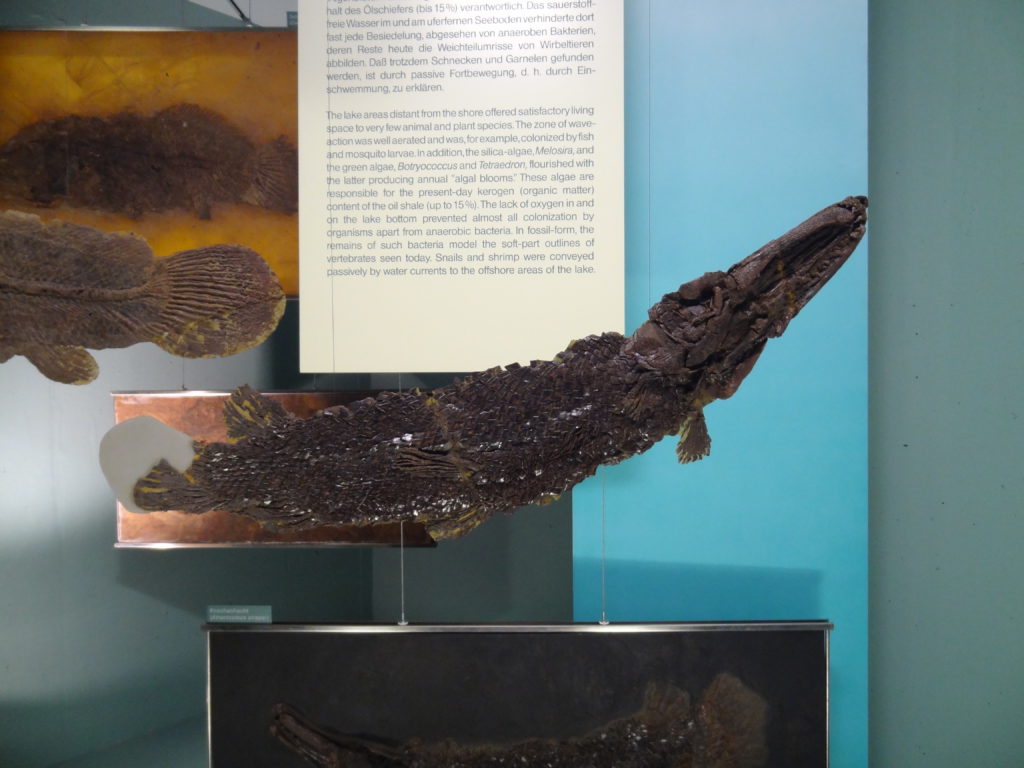
Besides A. strausi we find also another small, yet considerably weirder gar, Masillosteus kelleri. It was somewhat bigger than A. strausi and differed from all extant gars in its short and robust jaws which were not adapted to feed on fish but to crush hard-shelled invertebrates with its big and flattened teeth. Sadly there were no fossils of this species on display, but you can see a great life reconstruction of A. strausi and M. kelleri by Joschua Knüppe here:

Besides the gars was also another primeval predator, the amiid Cyclurus keheri:
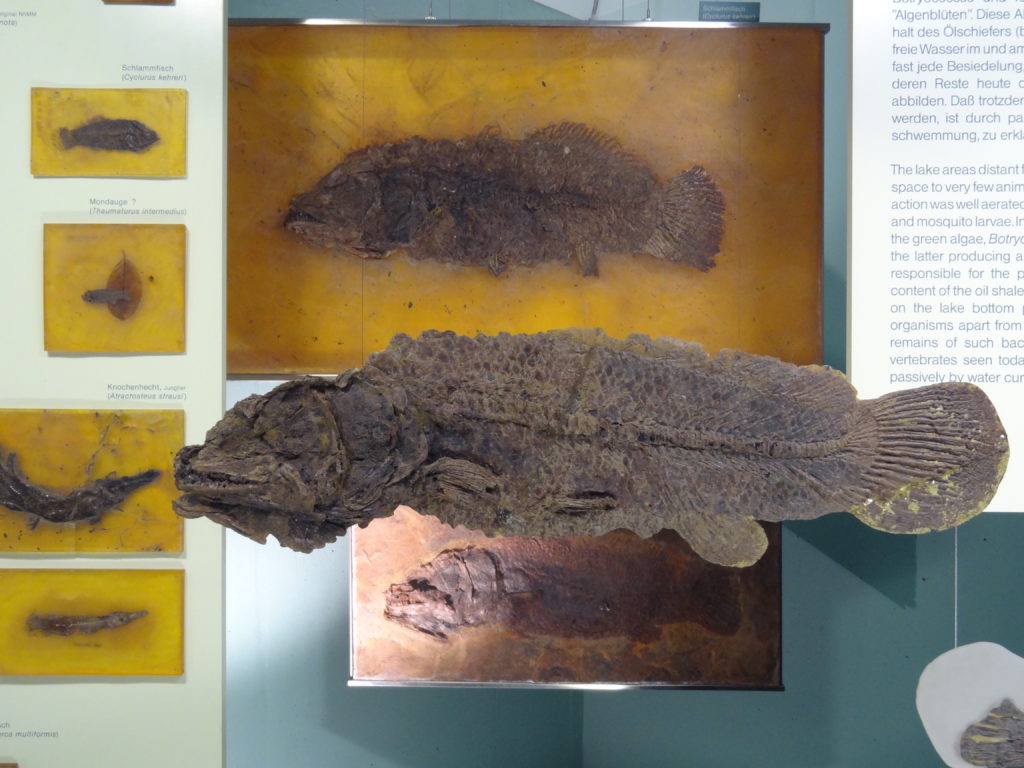
Amiids are a very ancient lineage of bony fish and are not very closely related with any other modern fish. Like the gars they have a heterocercal caudal fin. It was the large fish of this waters and large specimens reached lengths of around 70 cm.

In the Mesozioc there was a huge diversty of amiids, but today there is only one single remaining species, the bowfin (Amia calva) which is restricted to the North American continent. Besides its unusual caudal fin it doesn´t really look particular primitive, but it´s nearly some kind of freshwater analogue of the famous coelacanths of the genus Latimeria. Cyclurus keheri was quite similar to the modern bowfin in appearance, perhaps a little bit stockier. Here is a photo of a modern member of Amia calva by Arthur Kosakowski for comparison:
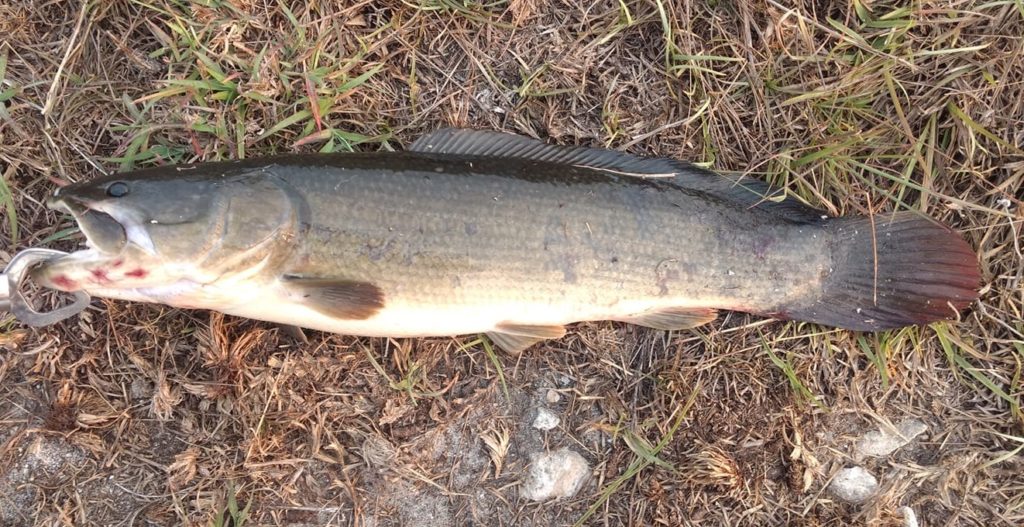
Take a close look at the fossil and its well developed teeth, which are very similar to those of the modern bowfin. They aren´t visible in the living fish, because they are hidden by the fleshy lips. Without living relatives for comparisons, we would quite likely only see quite toothy life reconstructions of it. Here is also another nice photo of a juvenile bowfin by Kurtis Smith:
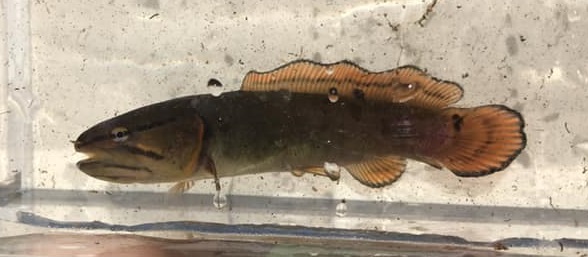
We know similarly sized specimens from C. keheri from Messel, and tiny gars as well:
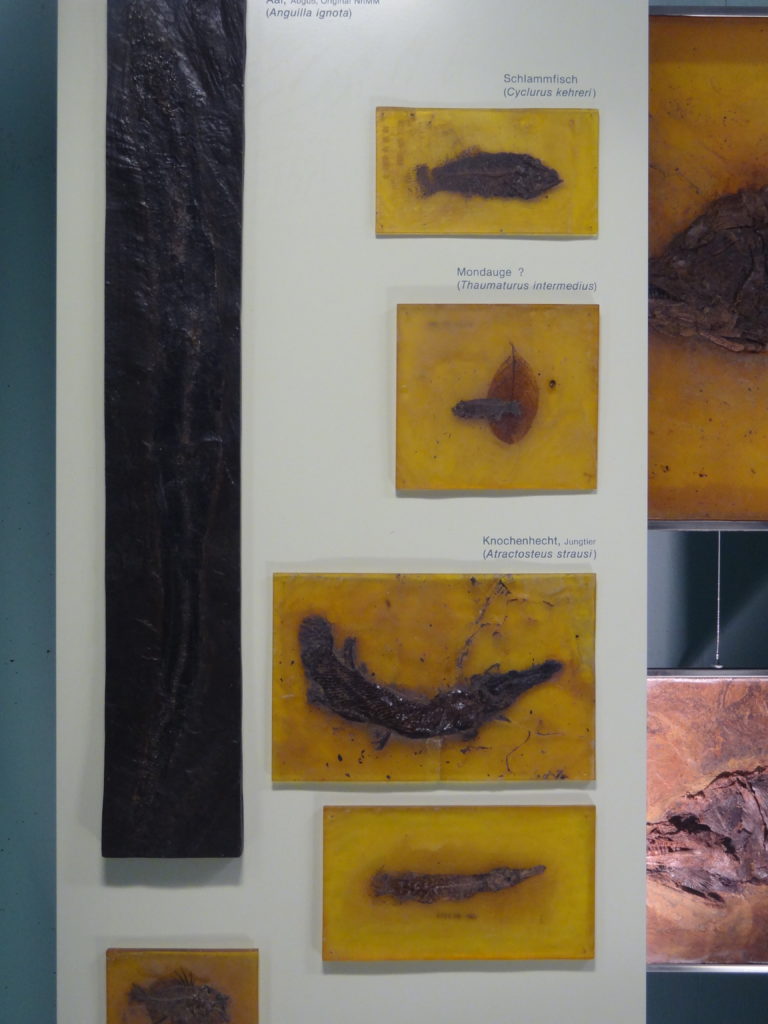
The small fish below the bowfin is Thamaturus intermedius. Its taxonomical relations are still somewhat problematic, some of the sources I found say it was related with mooneyes, whereas other sources say it was a member of the Salmoniformes. There are only two remaining species of mooneyes today, which also live solely on the North American continent today, but have a good fossil record from other continents as well. Despite their unremarkable appearance they belong to a quite archaic lineage and have some quite interesting relationships with the Osteoglossiformes which include such remarkable species like arapaimas or arowanas.
On the left you can see a fossil of the eel Anguila ignota, which is the rarest of all fishes from Messel pit, known only from a single specimen.
The ichthyofauna of Messel pit is quite low in species number and appears surprisingly unexotic, unlike the oddballs which we find among the rest of the contemporary fauna (more about them in the next parts of the series). What I find really interesting is that it includes so many lineages which are now restricted the New World, North America in particular.
Another predator was Amphiperca multiformis, a small but particularly large-headed and big-mouthed perch with a deep body, which looked a bit like a small and shortened version of a warmouth (Lepomis gulosus).
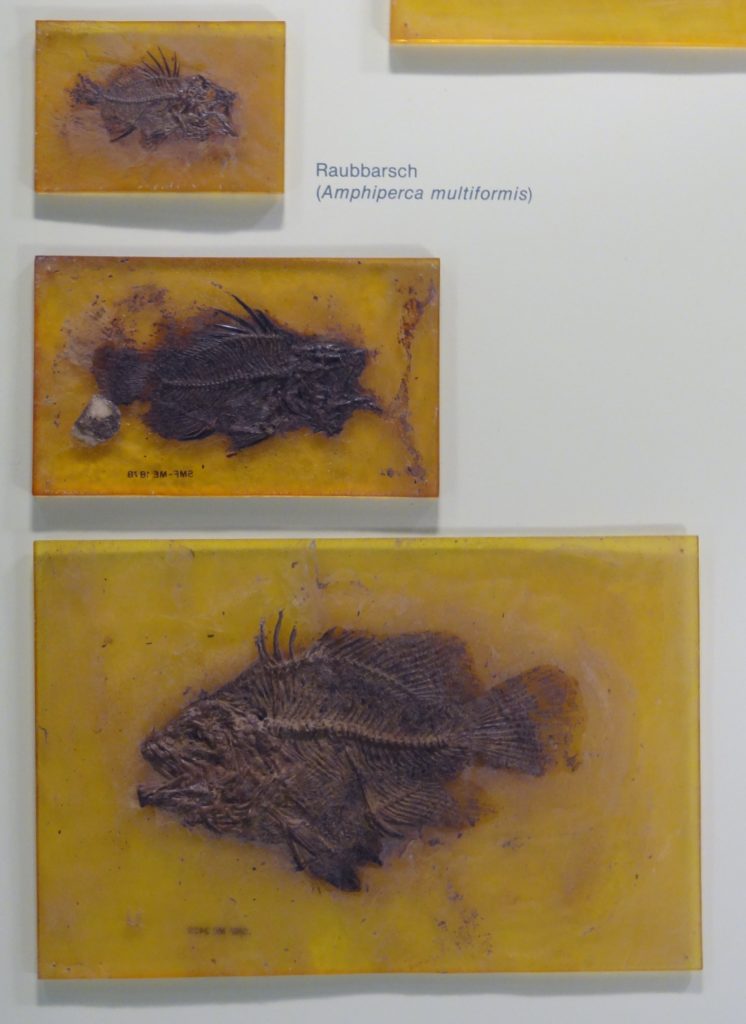
I made a simple speed-painting based on a skeletal drawing of Amphiperca. I usually spend much more time to make fine details and such things, but this time I really only wanted a quick illustration which was done in little more than an hour. I used some color morphs of the highly variable warmouth as main color reference. The fins of this fish are folded, because it´s directly based on the fossil of a dead fish. When the fish was still alive they were of course flexed and looked slightly different, but I wanted to stay as close as possible to the actual proportions of the fossil, so I didn´t try to reconstruct them in a different shape.

There is also another small perch known from Messel pit, Palaeoperca proxima, whose fossils are however not as common as those of Amphiperca. It was about 20 cm in total length and had a more elongated body than Amphiperca and the two dorsal fins were distinctly separated. Its proportionally much smaller mouth indicats that it also mainly feed on comparably small prey. Sadly there were no fossils of this species on display. The next part of the Messel pit series will cover the reptiles.
